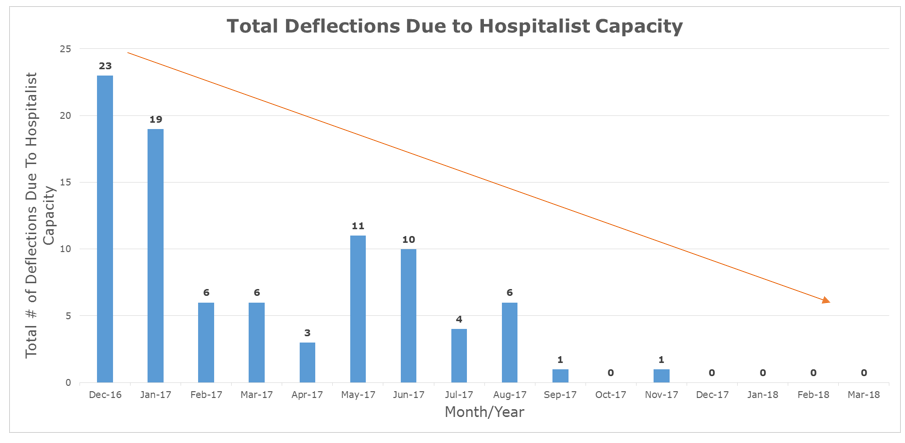Background: Partnership with Regional Medical Centers is a growth strategy for Virginia Mason as well as a service to our patients in the community. It is important to maintain our capacity to provide care to all patients wanting to come to Virginia Mason. Deflections, when we turn away patients from outside transferring hospitals, are expensive and a potential threat to patient safety as well as relationships with referring partners. Deflections can occur for many reasons including bed availability, nurse staffing, hospitalist capacity or specialty services not available. Between Jan 1, 2016 – March 31, 2017, we had 213 deflections at Virginia Mason with estimated loss of revenue of $4.7M. During the first quarter of 2017, hospitalist physicians started their shifts above capacity 51% of the time, making this group the primary driver of deflections. Hospitalist capacity was not visible to executive leadership and there was no escalation process to pull in non- hospitalist resources to assist.
Purpose: The aim of this rapid process improvement workshop was to develop an alert system that would standardize communication across the hospital and pull in appropriate resources to help support the hospitalist team when they approached an unsafe capacity.
Description: We applied the principles of Lean to address hospitalist capacity deflections. The intervention included standardized alert communication utilizing a red, yellow, green code deflection system. This alert would be sent out to the appropriate parties within thirty minutes of starting the day shift. This alert triggered leadership to mobilize the available resources to expedite medically appropriate discharges without pulling the hospitalists off line.
Conclusions: Since the launch of this process, the status of hospital medicine has been made visible through standardized alerts and has also been replicated in our other specialty partners. As a result of this work, we have seen our total number of deflections decrease, with zero deflections due to hospitalist capacity for the first quarter of 2018 (figure 1). Transparency and visibility of hospitalist capacity is the key to keeping patient access open and our referral relationships with transferring partners strong.

